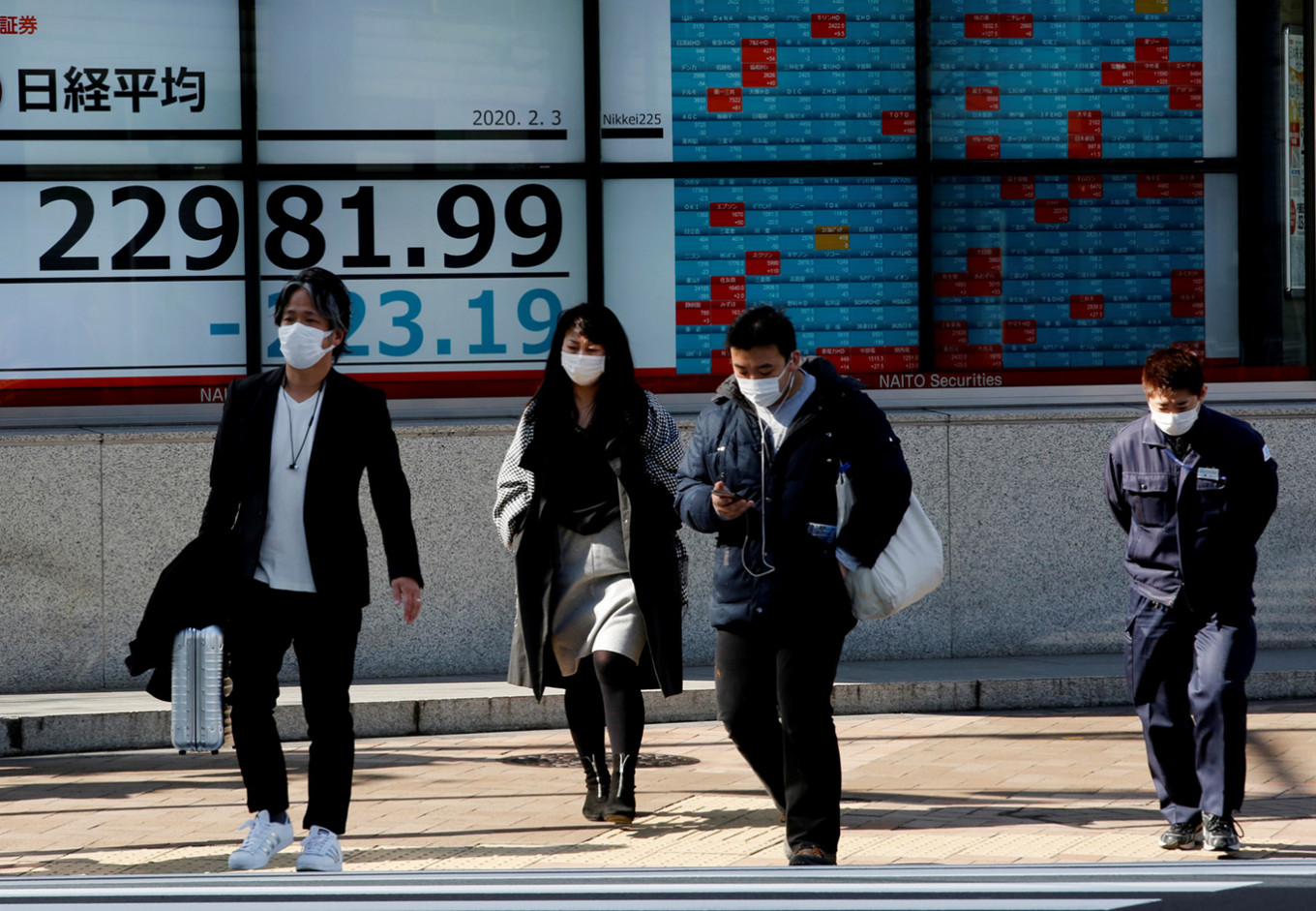Popular Reads
Top Results
Can't find what you're looking for?
View all search resultsPopular Reads
Top Results
Can't find what you're looking for?
View all search resultsJapan's little-known Nikkei 500 hits record high, outperforms US S&P 500
“It might be the best index that reflects the Japanese market,” said Yasuo Sakuma, chief investment officer at Libra Investments.
Change text size
Gift Premium Articles
to Anyone
T
he Nikkei 225 share average, Japan’s best-known stock benchmark, on Monday still stood 40 percent below its historic peak hit three decades ago, while its lesser-known sibling, the Nikkei 500, surged past its previous peak to a record high.
The Nikkei 500 has gained 7.7 percent so far this year, compared with a 0.6 percent fall in the Nikkei 225. In dollar terms, the 500 has risen more than 11 percent, handily beating 2.1 percent gains in the US S&P 500.
“The Nikkei 500 is showing one of the greatest performances among the world’s major stock indexes. Its chart shows that if you invest carefully in Japanese stocks, you can actually outperform the S&P 500,” said Richard Kaye, portfolio manager at French asset management firm Comgest.
Japanese equities in general lag behind their Wall Street peers, with many foreign investors staying away from the market because of a perception of lacklustre performance.
But the Nikkei 500 looks much different, and trails only the likes of tech indexes, such as the Nasdaq.
The 500-company index includes many firms that are popular with investors and have solid earnings growth - such as game company Nintendo, motor maker Nidec, electronic parts maker Murata, factory automation product company Keyence and furniture store chain operator Nitori.
Comgest’s Kaye says the index is “biased towards good companies” and tends to include companies that are innovative, have high return-on-equity (ROE) and a high percentage of overseas sales.
Some fund managers say it may be a superior benchmark compared with the better-known Nikkei average.
“It might be the best index that reflects the Japanese market,” said Yasuo Sakuma, chief investment officer at Libra Investments.
Compared to the Nikkei 225, which still includes a lot of old economy firms, the 500 index better reflects changes in Japan’s industrial structure and the economy’s shift to the service industry.
The strong performance of the Nikkei 500 shows the market is now driven by companies that can grow profits without a weaker yen, rather than by exporters such as carmakers, Sakuma said.
“Looking ahead, I think the Nikkei 500’s outperformance will continue because its advantage could grow even bigger if regulation reforms and digitalisation progresses under Prime Minister Yoshihide Suga.”










